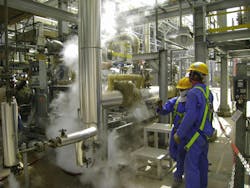Application Corner: Division 2 (Zone 2) approval
Continuing the previous installment’s discussion about using or losing knowledge, instrumentation engineers often deal with hazardous locations. As their careers progress, they may be asked to perform different functions, get promoted, change locations where hazardous materials are not present, or a combination thereof.
Consultants perform work for clients who do not have expertise in a particular area, are overloaded or want to mitigate political issues. You never know what the next phone call or email will bring. On a side note, one of my colleagues could not understand why he was hired to solve a problem that his client could handle. The reason quickly became apparent during his presentation, when a war erupted between him and two groups (on opposite sides of the table) advocating for different solutions. His role was to take the arrows from both groups, solve the problem and leave town without the two groups fighting each other, which would create lingering resentment. In other words, his purpose was to be the bad guy. This example has nothing to do with hazardous locations… and that is the point.
Instruments located in Division 1 (Zone 0 and Zone 1) hazardous locations, where the hazard is considered to always be present, must be approved for the hazard and installed using methods described in the National Electric Code (NEC) or other applicable national standards. My recollection is that instruments installed in Division 2 (Zone 2) hazardous locations where the hazard is present occasionally, such as under abnormal operating conditions, needed to meet certain criteria, such as not having arcing devices, sparking devices or hot spots, and did not need to be formally approved. I have been away from this for a few decades, but it is my understanding that formal approval for Division 2 (Zone 2) is desirable, and now the norm.
Hazardous location requirements in conjunction with additional markings for Division 2 (Zone 2) can create confusion, as will be discussed in my next article.
About the Author
David W. Spitzer
David W Spitzer’s new book Global Climate Change: A Clear Explanation and Pathway to Mitigation (Amazon.com) adds to his over 500 technical articles and 10 books on flow measurement, instrumentation, process control and variable speed drives. David offers consulting services and keynote speeches, writes/edits white papers, presents seminars, and provides expert witness services at Spitzer and Boyes LLC (spitzerandboyes.com or +1.845.623.1830).
